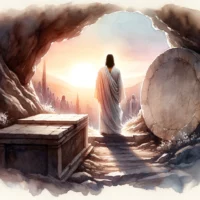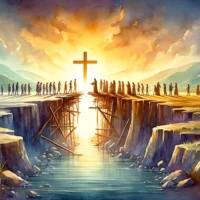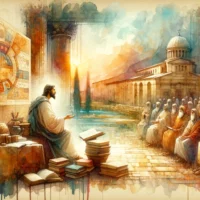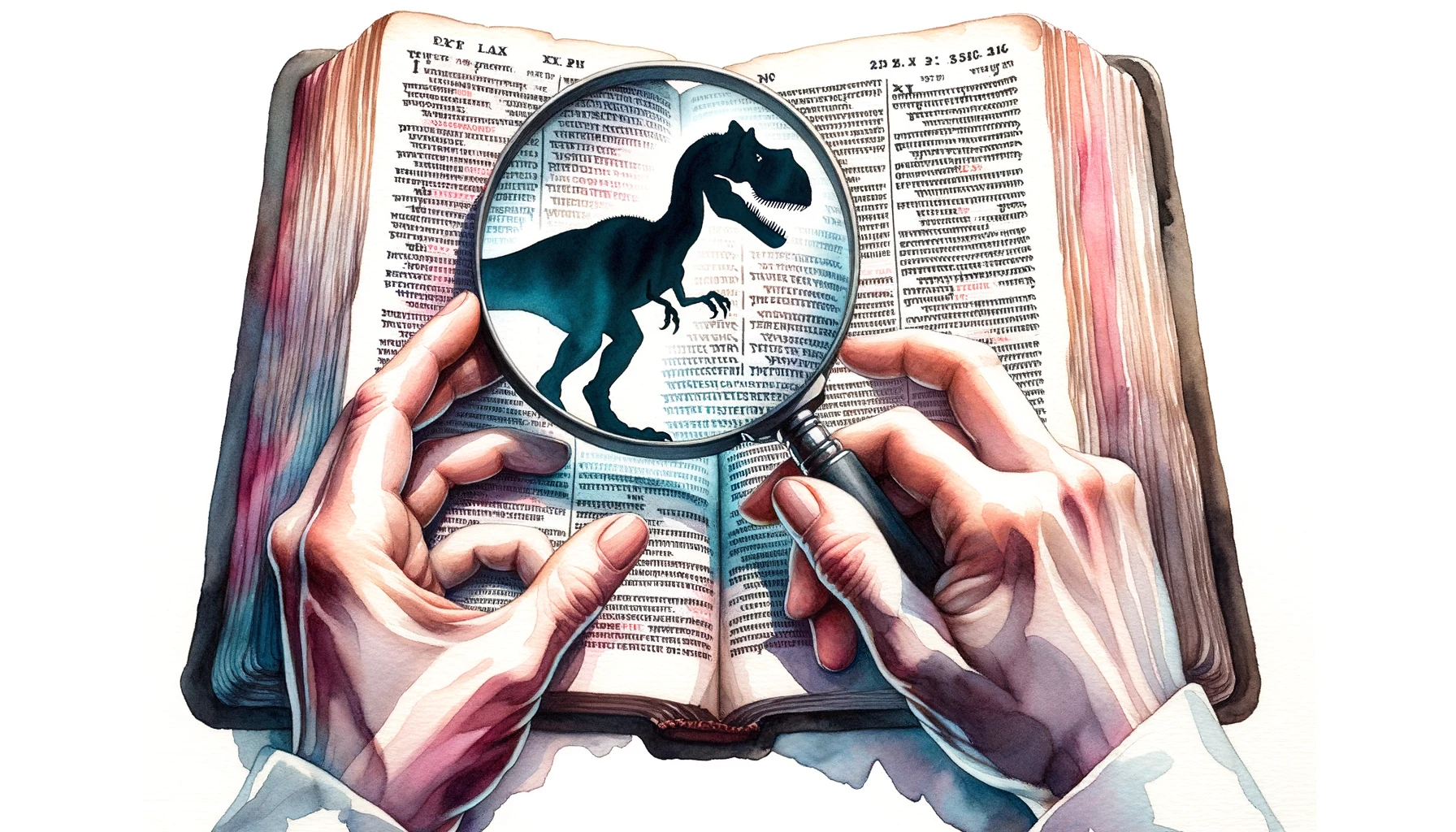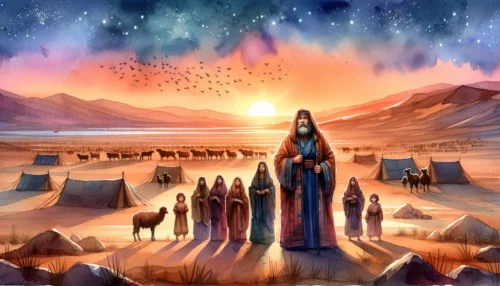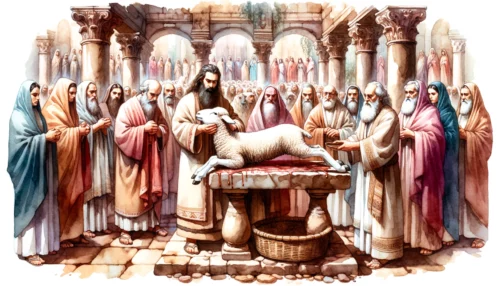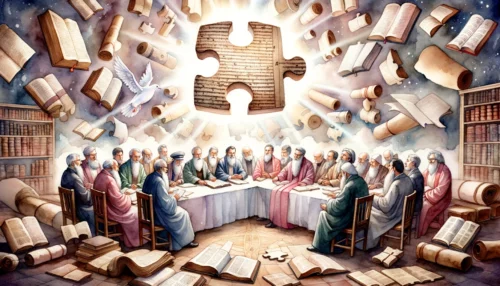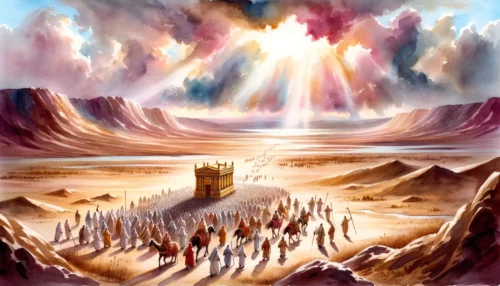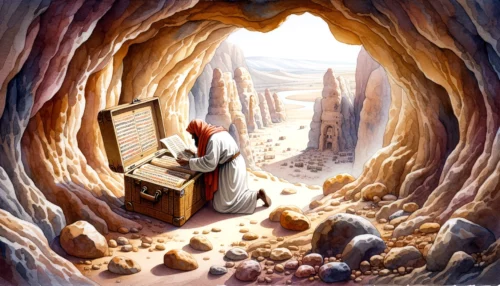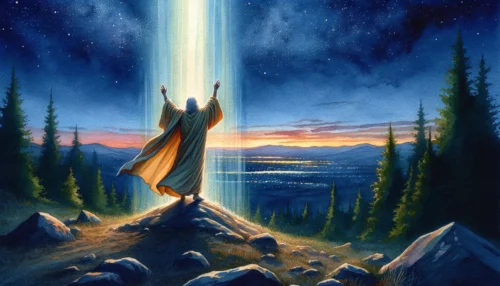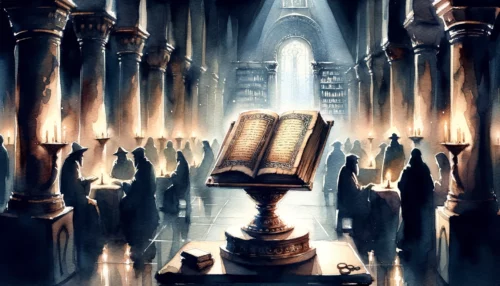As believers, we often encounter questions about the existence of dinosaurs and their place in the Bible. While the term “dinosaur” does not explicitly appear in the Scripture, there are passages that might refer to these prehistoric creatures. To better understand these connections, we must examine the Bible’s teachings and historical context. In doing so, we may find answers to whether or not the Bible acknowledges these ancient giants.
The Bible’s References to Ancient Creatures
Our journey begins with a broader look at the Bible’s accounts of ancient, large, and mysterious creatures. It’s important to remember that the word “dinosaur” came into existence much later than the Bible’s finalization. The term was coined by Sir Richard Owen in 1842, while the last books of the Bible were completed around 100 AD. As such, we shouldn’t expect to find the term “dinosaur” within the Scripture. However, this does not preclude the existence of creatures that may resemble what we today call dinosaurs.
Several biblical passages reference large and mighty creatures. For instance, in the Book of Genesis, there’s an account of God creating ‘great creatures of the sea’ and ‘every living creature that moves’ on the fifth day of creation (Genesis 1:21). Although this passage does not specify dinosaurs, it refers to the creation of all animals, potentially including those we now know as dinosaurs.
In the Book of Job, there are references to ‘behemoth’ and ‘leviathan’, described as large and powerful creatures. Behemoth is depicted as a colossal, plant-eating animal that moves its tail like a cedar (Job 40:15-24). Leviathan, on the other hand, is described as a terrifying sea creature, impervious to human weapons, and emitting fire and smoke (Job 41). Though these descriptions are not definitive proof of dinosaurs, they do portray creatures of great size and power, reminiscent of how we imagine dinosaurs to have been.
The Book of Psalms also mentions ‘dragons’ and ‘sea monsters’ (Psalms 74:13-14). Again, while these terms are not synonymous with dinosaurs, they demonstrate the Bible’s acknowledgment of large, formidable creatures that existed in the ancient world.
While the Bible does not explicitly mention dinosaurs, it does reference a variety of large and powerful creatures. The descriptions given to the behemoth, leviathan, and the great creatures of the sea show an awareness of beings that bear a certain resemblance to what we now call dinosaurs. Our understanding of these biblical creatures is informed by our modern knowledge of dinosaurs, inviting us to ponder the connections and marvel at the mysteries of God’s creation.
The Book of Job and the Behemoth
The Book of Job provides us with one of the most intriguing references to an ancient creature, namely the Behemoth. This creature is introduced in Job’s dialogue with God, where God uses its description to emphasize His power and the marvels of His creation. While God is the one who introduces the Behemoth, the creature is described in a way that distinguishes it from other known animals (Job 40:15-24).
The Behemoth is described as an herbivore, feasting on grass like an ox, and its physical strength is emphasized with comparisons to iron and bronze. One of the most curious details is its tail, which is described as moving like a cedar. This description might seem unusual, especially if we try to match it with any animals familiar to us today. The vast majority of large herbivores do not have a tail that could be likened to a cedar. This detail has led some to suggest that the Behemoth could be a creature resembling what we now call a dinosaur.
However, we should be cautious in making definitive conclusions. The description of the Behemoth is indeed intriguing and the creature’s size and power certainly resonate with our understanding of dinosaurs. Yet, it is also possible that the Behemoth is a creature that was well known to the ancient people, possibly an elephant or a hippopotamus, and its description is figurative, not literal.
In the case of the Behemoth, we find an example of a creature that is unique in its description within the Bible, one that invites curiosity and speculation. The Behemoth’s might and grandeur, as described in the Book of Job, align with what we understand about dinosaurs, yet without concrete evidence, we cannot definitively say that it is a reference to a dinosaur. The Behemoth serves as a testament to God’s incredible power in creation, a reminder of the vast variety of creatures that God has brought into existence, and perhaps a nod to the mysteries of the natural world that we continue to explore and understand.
The Leviathan: A Sea-Dwelling Monster
Shifting from land to sea, another captivating creature mentioned in the Book of Job is the Leviathan. This sea-dwelling monster is depicted as a formidable creature, one that is beyond the power of any human to tame (Job 41). The Leviathan’s fearsome attributes are detailed in this book, providing us with a vivid, awe-inspiring image of this biblical monster.
The Leviathan is described as a creature of immense strength, with a tough outer ‘armor’, fearsome teeth, and a back with rows of shields tightly sealed together. It is said to have fearsome eyes, and it’s described as leaving a shining wake behind it in the sea, even to the point of making the deep appear to have white hair. One of the most striking characteristics of the Leviathan is that it reportedly emits fire and smoke, adding to its fearsome and formidable reputation.
While the description of the Leviathan seems to evoke an image of a fantastical creature, it’s essential to remember the context and purpose of this description. The Leviathan, much like the Behemoth, is used to highlight God’s unmatched power and the marvels of His creation. The creature’s description may be a mix of observable characteristics of known creatures and symbolic elements meant to underscore its fearsomeness.
Some suggest the Leviathan might have been inspired by large sea creatures like crocodiles, whales, or even prehistoric marine reptiles known to us from the fossil record. However, its fiery breath leans more towards mythological and symbolic interpretation than literal representation.
Exploring the Leviathan’s depiction in the Book of Job, we encounter a creature of awe-inspiring power and terror, reflecting the might and majesty of God’s creation. While it’s tempting to draw parallels with prehistoric marine reptiles, the Leviathan’s description also contains elements that appear more symbolic than literal. Regardless of its exact nature, the Leviathan serves as a powerful symbol of the untamable and incomprehensible aspects of the natural world, affirming the wonder and mystery of God’s creation.
Reflecting on the Ancient Creatures of the Bible
The exploration of dinosaurs and their potential presence in the Bible invites us to reflect on the nature of God’s creation and the mysteries it still holds for us. While we don’t find the term “dinosaur” in the Bible, we do encounter descriptions of mighty creatures like the Behemoth and Leviathan, which evoke a sense of awe and wonder.
For further contemplation on this topic, consider the following questions:
- How does the depiction of mighty creatures in the Bible, like the Behemoth and Leviathan, enhance your appreciation of God’s creation?
- What can the biblical accounts of these powerful creatures teach us about the relationship between faith and scientific discovery?
- How might our understanding of ancient creatures like dinosaurs influence our interpretation of the biblical texts?
May the awe-inspiring descriptions of the Behemoth and Leviathan serve as a reminder of the grandeur and diversity of God’s creation. Let these ancient creatures, whether literal or symbolic, inspire us to continue to seek wisdom and understanding in both our faith and our exploration of the world around us. As we journey together, let’s marvel at the wonders of God’s creation, from the smallest microbe to the mightiest dinosaur. And may this wonder fuel our faith and our ongoing exploration of the world God has so lovingly crafted.
